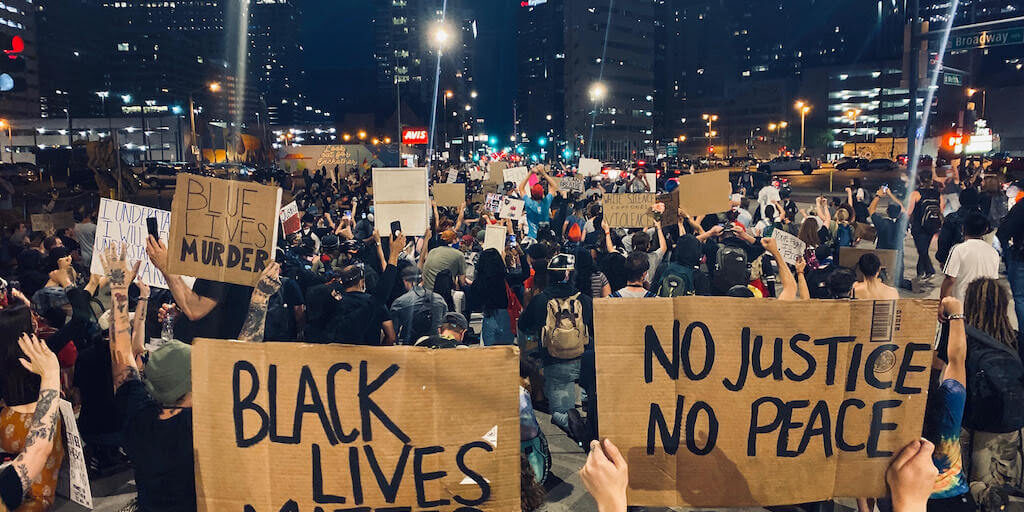Let’s address the elephant in the room…
Good Grief: What good can come out of this grief? Change.
What you are seeing, experiencing, and feeling is grief. Yes, another blow of loss in the midst of a global pandemic. If you recall, grief is defined as the conflicting feelings caused by the end of or change in familiar pattern or behavior. Where is this grief coming from? It’s coming from a lack of trust.
Losses of trust events are experienced by almost everyone and can have a major, lifelong negative impact. Some are feeling a loss of trust in legislation, justice, equality, being heard, being understood, people, God and any other relationship. Most of the comments that grievers hear following a loss, while intellectually accurate or not, are emotionally barren.
Recovery is finding new meaning for living, without fear of being hurt again. So, how do we begin the recovery process? Through small deliberate actions for sustainable change. We must be open to listen to the hurt of others without offering comments to justify our position.
Ask yourself, is there anything that you can do to facilitate inclusion while breaking down barriers related to race. While there is no one set of concrete steps for creating an inclusive world, there are concrete steps that we all can take. Racial discrimination, disenfranchisement, and the sense of isolation are common concerns of minorities. But if you don’t hear, acknowledge, and attempt understand them, you can’t do anything about it.
So, how do we begin to have the uncomfortable conversations around what we are experiencing as a nation? There are those who are hurting, frustrated and angry as they are triggered by the events of injustice on a daily basis.
Many whites may avoid conversations about race out of fear of “saying the wrong thing.” And many people of color may avoid these conversations out of fear of being seen as a complainer, playing the race card — or worse. However, acting as if the elephant in the room isn’t there won’t make it go away. If anything, it will cause events that we are experiencing today. The uncomfortableness will cause silence and we must keep the conversations and education around this topic alive if we truly want to destroy it.
Don’t be silent. When you see bad behavior or discrimination at work, say something… address it immediately. Silence is complicity and we have to have the courage to identify those who choose to exclude and hurt others. Also acknowledge when you see positive behavior. I always believe people want to be recognized for the good things they do. I believe they don’t engage in positive behavior because they want to be recognized but they are appreciative if someone acknowledges a kind or positive act. I also believe positive behavior is infectious. If more do it others will follow.
Make inclusion a long-term investment. We can become desensitized to the signs and events that are going on when we ask what we can do as a “nice to do,” limiting sustainable change. Positive change comes from intentional practice and regular discussions that are informed by and interwoven and presented consistently over time. If we make these conversations routine and for extended periods of time, we will begin to see change. When conversations about race occur within a larger investment in inclusion, those discussions gain a context that helps employees understand why they’re valuable and where they fit into the overall business strategy.
Cordoning off diversity and inclusion efforts in a single department signals those issues aren’t priorities, making challenging conversations easier to avoid. Successful customized training sessions that are embedded and sustained over time involve cohort-based experiences, immersion opportunities, coaching, book clubs, and small study groups that convene for at least a quarter or, at best, a year or longer. And unconscious bias training– which has gotten very popular recently — is important, but it’s only one piece of the puzzle.
Just as becoming a skilled manager didn’t happen in one workshop, becoming a competent participant in or a facilitator of racial dialogues also takes time and development. One company my firm worked with in the insurance sector engaged in customized diversity and inclusion training over the course of three years. Over time, this investment led to a significant overhaul of its evaluation metrics to ensure equity, as well as an increased capacity for difficult dialogues about race and other inclusion topics.
Listening. Listen with the intent of being color-cognizant rather than color-blind, responding non-defensively, being open to learning, and self-reflecting about how personal and social identities can influence these interactions.
Company-wide discussions about race have the potential to be tense and getting defensive is the quickest way to halt progress. Because fear of being seen as “confrontational” for either white or minority employees hinders open dialogue, conflict needs to be reframed as a solution-seeking act necessary to progress.
Instead of getting surprised by conflict, expect it, and lean on management and facilitation skills that include listening, being color-cognizant rather than color-blind, responding non-defensively, being open to learning, and self-reflecting about how personal and social identities can influence these interactions.
Research shows employees are more productive and exhibit stronger problem-solving capabilities when they work in diverse groups. Potential conflicts can become opportunities for growth and improved performance when management fosters an environment where discontent can be heard rather than treated as adversarial.
What can you do? Be willing to proactively ask your friends and employees to talk about how they feel race has influenced their experiences, rather than wait for a crisis situation to emerge before tackling these issues. Preemptive discussions allow conversations in constructive ways and can help prevent future conflicts from spiraling out of control. Lead by example, teach your kids to love their neighbors as they love themselves. Respect the differences of others and allow your teams to be true to their authenticity.
We tend to seek tangible ways in which to make change, we enjoy checklist as a sense of accomplishment. However, true change becomes a lifestyle, it begins in the heart, true change comes from within. Is your heart open to change?
Warmly,
Lina








